A muscle car that time forgot? Revisiting the 1973 Pontiac GTO Colonnade
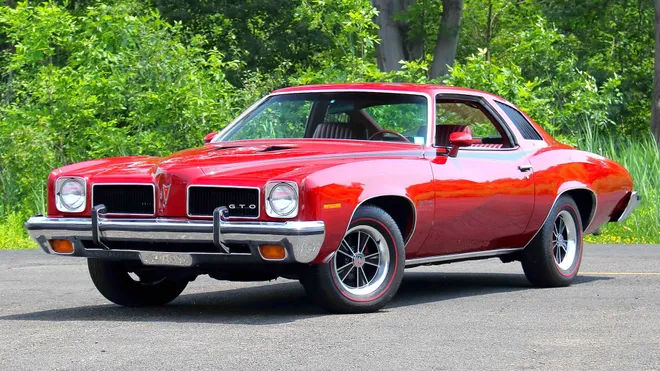
Hot rodders owe a debt of gratitude to Pontiac, GM’s step-up brand from entry-level Chevrolet, for creating the muscle car segment pretty much from whole cloth in 1964. For his role in creating the GTO — an affordable midsized car with a larger 389ci V-8 from full-sized Pontiacs — chief engineer John Z. DeLorean was elevated to Pontiac division head in 1965. After getting off to an amazing start in 1964 (interestingly, the idea was to hide the large engine option, burying it in paperwork) with 32,450 being built, the GTO’s popularity peaked in 1966, with 96,946 units produced. When a revised intermediate A-body was introduced for 1968, sales rebounded again with 87,684 being sold. Nevertheless, by 1972, the last year of the GM A-body platform, GTO sales had slipped to just 5,807.
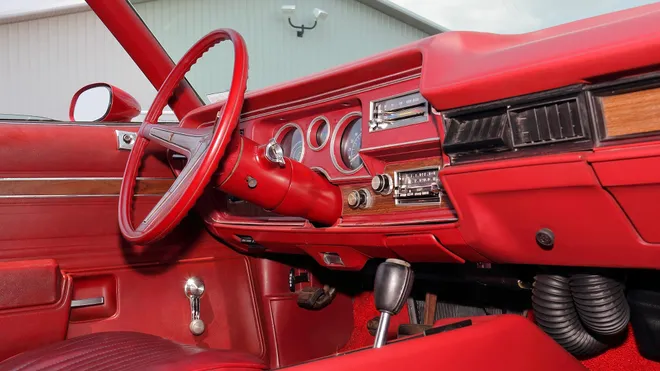
Changing of the guard at Pontiac
By 1970, DeLorean’s success at the helm of Pontiac had been rewarded with a promotion to run GM’s Chevrolet division, but the timing would coincide with the downturn in performance that would characterize the 1970s. DeLorean’s replacement, F. James McDonald, was the antithesis of DeLorean concentrated his efforts — first at Pontiac in 1970, then at Chevrolet beginning in 1972 — on consolidating and streamlining GM’s production. By then, the focus on performance at Pontiac had shifted to the Firebird, and there seemed little motivation to buoy the waning popularity of the GTO.
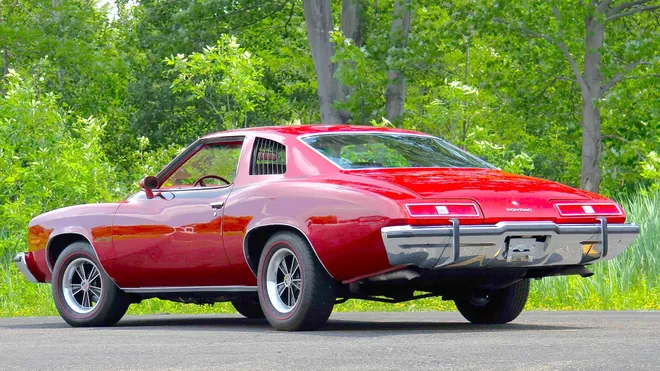
Pontiac style leads the pack
When GM’s new colonnade-style intermediate platform debuted in 1973, the GTO would reappear in gorgeous new sheetmetal, which was artfully differentiated from its Chevy, Buick and Oldsmobile colonnade siblings. Conceived at a time immediately preceding the OPEC oil embargo and many draconian regulations that would soon hobble the muscle car, the GM colonnade intermediate held much promise for a new generation of performance cars. Many improvements were baked in up front, from larger engine bays for big-block V-8s, to stiffer perimeter frames, radial tires, power disc brakes and computer-designed suspensions. Nevertheless, by 1973, all of GM’s colonnade intermediates suffered from tacked-on 5-mph bumpers and wheezy smog-choked engines, which hit Detroit like a blight. It would take nearly another half century for hot rodders to come to the realization that there was indeed much to offer in a 1973-to-1977 colonnade A-body.
Highlights from Mecum Glendale 2024:Revisiting 10 classic muscle car deals
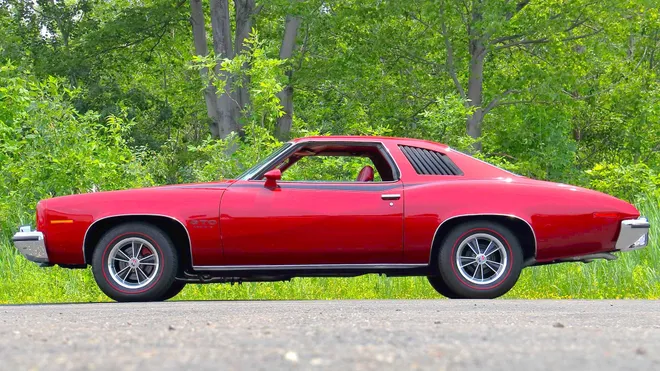
Look for this 1973 GTO at Mecum Auctions
Among the 4,806 Pontiac GTOs minted in 1973 is this LeMans Sport coupe, which is scheduled to be auctioned at Mecum’s Harrisburg, Pennsylvania, event as lot F98 on Friday, July 26, 2024, which you can watch live on the MotorTrend channel. We’ll also note that this 1973 GTO is one of 32 cars to be auctioned from The Great Lakes Collection, most of them in sequence with the 1973 GTO. This is an eclectic group of reserve cars that includes classic muscle cars, ’50s classics, street rods and even late-model trucks. Although this ’73 GTO is a bit of an outlier, the collection also includes a 1967 GTO we’ll be keeping our eyes on.
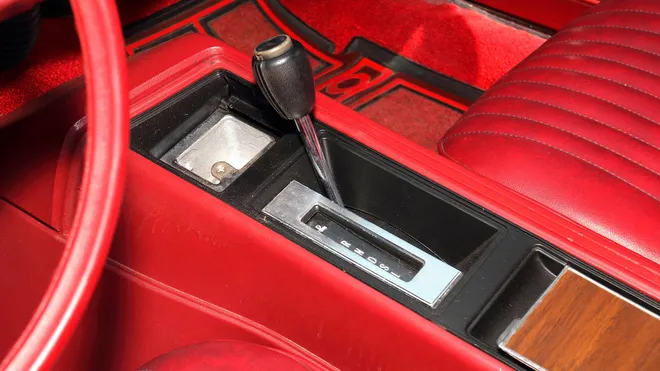
GTO competes with Grand Am
By 1972, GTO sales had plummeted to such an extent, it was no longer a Pontiac model unto itself but a trim level of the LeMans. Going into 1973 with the new colonnade platform, the GTO would soldier on with sales falling again from 5,807 units (1972) to just 4,806 (1973). Ironically, the futuristically styled Grand Am — attributed to assistant chief engineer Bill Collins and chassis engineer John Seaton — was also on the menu at Pontiac. It had taken on the new role of Euro-centric luxury performance coupe, and when equipped with the Super Duty 455ci V-8 became an upmarket gentleman’s muscle car. More important, the Grand Am had the effect of cannibalizing GTO sales as it too was built on the same colonnade platform and shared much of its styling and virtually all of its powertrain.
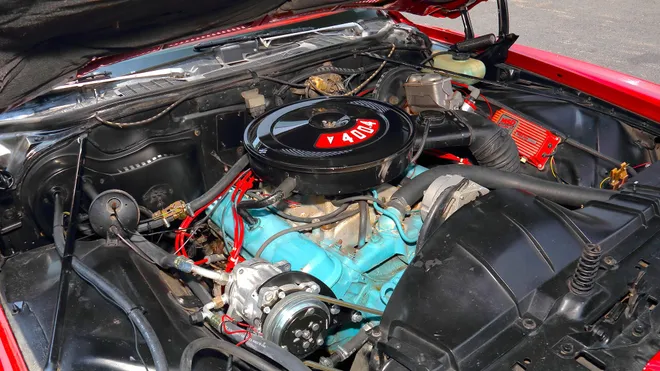
The GTO as a LeMans option
By comparison, the 1973 LeMans GTO was more of a throwback to its early muscle car beginnings in the sense that it was a modest performance overlay to a basic LeMans coupe (D37) or LeMans sport coupe (F37). Although the once-feared 250-hp 455ci was still available in the GTO for 1973, it only had 544 takers. The rest were equipped with the 230-hp RPO-L78 4bbl 400ci V-8, as is the case with this Mecum example. Gear ratios were either 3.08:1, 3.23:1 or 3.42:1 (Safe-T-Track limited-slip optional) in a comparatively stout 8.5-inch 10-bolt rear. Transmission choices were a standard three-speed manual Muncie, optional Turbo 400 automatic (as seen in this example) or the rare four-speed Muncie manual box.
2024 Charger Daytona EV:Dodge drops the Challenger, flexes new Charger model

GTO coupe versus GTO Sport coupe
There was little to visually differentiate the GTOs built on the D37 LeMans coupe and the F37 LeMans sport coupe, but one clear way to tell is by the F37 sport coupe’s louvered quarter-window treatment, which can be seen in this Buccaneer Red example. (Fewer than 500 1973 GTOs were built on the base D37 LeMans coupe, which had no quarter-window louvers.) Either of these LeMans trim levels had a choice of dome hubcaps (on 15 x 7 steel wheels), five-spoke 15 x 7 Rally II wheels or 15 x 7 honeycomb alloy wheels, but here we have a set of aftermarket 15 x 7 Hurst Dazzler alloy wheels. Hurst was often a supplying partner to Pontiac vehicles, and while not a factory option on this car, the Hurst Dazzler wheels are a rare and appropriate day-two addition.
Related: The 1973 Hurst Pontiac Grand Am That Never Was

Pontiac introduces the NACA duct to muscle cars
With the advent of the colonnade A-body in 1973, Pontiac began using NACA ducts as a functional styling cue. NACA, an acronym for the National Advisory Committee for Aeronautics, was a federal agency dedicated to aeronautical research and standards, and the agency’s design for an effective intake cooling duct that minimized drag surfaced decades later as a popular design for automotive use. With the auto industry already burdened with new federal crash standards, higher CAFE standards and lower emission requirements, the NACA ducts on the GTO were initially planned to be functional, with ducting from the NACA scoops fed directly to the air cleaner, but when the GTO couldn’t pass federal drive-by noise standards, the ductwork was ditched, but it wasn’t for want of trying.
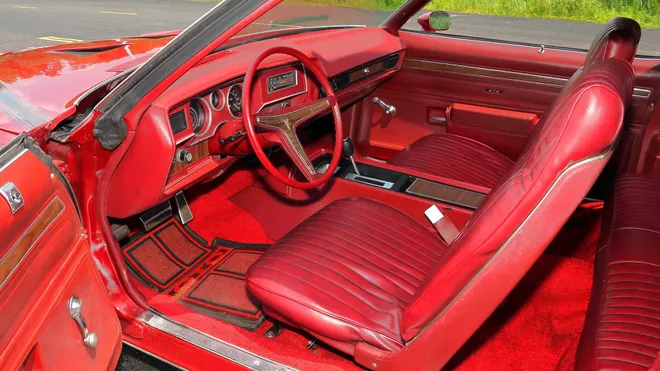
The last midsized GTO
What we see here in Mecum lot F98 is a perfect snapshot in the latter part of the GTO’s historical arc, bridging the muscle car era (1964-1972) to the malaise era (1973-1981) in an example that embodied both the muscle car’s storied past and the new decade’s emphasis on personal luxury. Showing a scant 10,779 miles on its odometer and being only one of 4,806 Pontiac GTOs built in 1973, this example would belong in any serious collection of GTOs, but it could also provide an affordable, high-quality entry point for Pontiac fans of more modest means. It should be noted that while the 1973 GTO was the last GTO to be built as a midsized car, it was not the last. The 1974 Pontiac GTO would stand as the last classic GTO and was built as an option on the compact Ventura, which was platform-shared with the Chevy Nova.
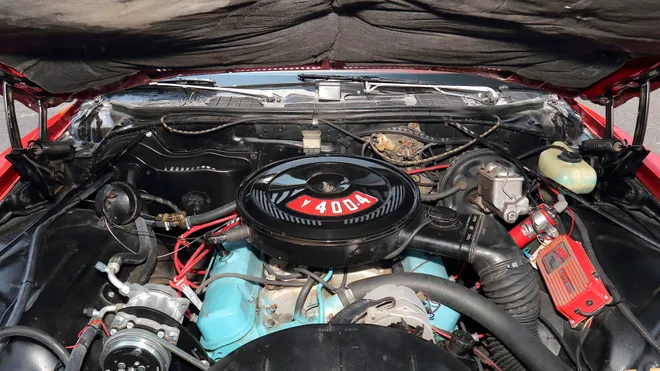
What’s a 1973 Pontiac GTO worth?
Although lot F98 is under a reserve, a realistic final bid would likely come in below $20K. Hagerty values a 1973 in excellent condition at $18,800 (we’d need to ding the consignor a tad for the non-factory parts and wear to the interior trim and factory stereo, but not much) with the range running from $7,900 in fair condition to $27,800 in concourse condition.

How to watch Mecum Auctions Harrisburg 2024
- Watch live coverage on MotorTrend or stream on MAX / July 25–27 from 12-6 p.m. ET
Mecum’s Harrisburg auction takes place from July 24 to July 27, 2024, at the Pennsylvania Farm Show Complex, where this custom hot rod and many other cool vehicles will hopefully be sold to the highest bidders.
Want to stream this year's auction?Check out USA TODAY Home Internet for reliable broadband options in your area.
1973 Pontiac GTO, Mecum lot F98
- VIN: 2F37T3A172609
- odometer shows 10,779 miles
- mild restoration
- 400 CI V-8 engine
- aftermarket MSD ignition & coil, Edelbrock Performer intake manifold, long-tube headers
- Turbo 400 automatic transmission
- 4-barrel carburetor
- red exterior
- matching red interior
- air conditioning
- power steering
- power brakes
- Hurst 5-spoke wheels
Photos by Mecum Auctions
Disclaimer: The copyright of this article belongs to the original author. Reposting this article is solely for the purpose of information dissemination and does not constitute any investment advice. If there is any infringement, please contact us immediately. We will make corrections or deletions as necessary. Thank you.







